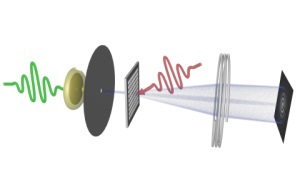15th April 2016
Interactions between electrons and vibrations of atomic ions, of which all condensed matter is composed, and which determine such fundamental features like electron and thermal conductivity of materials, energy dissipation in electronic devices, and emergence of quantum phenomena like superconductivity, are a central subject in solid-state physics.
Lutz Waldecker and Roman Bertoni of the Max Planck Research Group headed by Ralph Ernstorfer, in cooperation with Jan Vorberger of the Max-Planck-Institut für Physik komplexer Systeme, Dresden, have now visualized and quantified electron-lattice interactions after a sudden very short external disturbance (a 50 femtosecond infrared laser pulse) in aluminum, a proto-typical metal. Due to these interactions, the excited electrons proceed to equilibrate with the atomic vibrations, and successive snapshots of the latter provide a “movie” of the relaxation process. Comparing the experimental findings with state-of-the-art numerical calculations of atomic mean squared displacements made it possible to revise the existing model of such interactions.
Original publication:
Lutz Waldecker, Roman Bertoni, Ralph Ernstorfer, and Jan Vorberger
Electron-Phonon Coupling and Energy Flow in a Simple Metal beyond the Two-Temperature Approximation
Physical Review X vol. 6 (doi: 10.1103/PhysRevX.6.021003)















